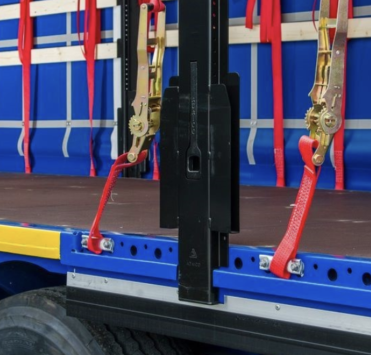Tare and packaging: Main types and characteristics

For safe transport by any mode of transport, most goods are accepted in reliable packaging. Proper tare and packaging ensure the safety of goods during transport and during loading and unloading operations. Packaging also plays an important role in the formation of cargo units by weight and dimensions, which simplifies the control and accounting of quantitative indicators of cargo during shipment and receipt.
- Boxes
- Barrels
- Eurocubes (IBC cubes)
- Canisters
- Drums
- Bags
- Baloons
- Kegs
- Bales
- Pallets
- Sheathinz
- Stretch film
- Shrink film
- Containers
Packaging
Packaging is a key element of packaging designed to accommodate products. Unlike disposable packaging, containers are often reusable. During transport, goods must be packed tightly into containers and the empty spaces filled with packaging materials (paper, shavings, cloth, foam rubber, polymers, etc.) to provide density and protection for the goods. The type of packaging is determined by its shape, and the type by its material and construction.
Packaging is a means or set of means that protects cargo from damage, loss and environmental hazards, and prevents contamination. Effective packaging greatly simplifies the processes of storage, transport and transhipment. The main elements of packaging are tare, packing materials and preservation means, which play a key role in ensuring the safety and integrity of cargo at all stages of logistics.
Transport packaging is a key element for the transport, storage and warehousing of products. It can belong to any organization involved in logistics processes. The correct use of tare and packaging enables the efficient use of the cargo volume of vehicles, which is particularly important for optimizing logistics. In addition, packaging provides convenient conditions for loading and unloading, as well as for bundling and labeling of goods. Efficient packaging and transport containers play an important role in securing the safety of goods and increasing the efficiency of logistics operations.
Transport packagings can be roughly classified according to the following characteristics
- By number of uses: single-use and reusable;
- In terms of dimensional stability: hard and soft;
- Depending on the type of product to be packed: liquids, bulk goods, piece goods;
- By production method: welded, glued, blown, molded, pressed, thermoformed, foamed;
- By material: polyethylene (PE), polyvinyl chloride (PVC), polypropylene (PP), polystyrene (PS) and others;
- By compactness: collapsible and non-collapsible.
The tare is a key element of packaging, which is a product for placing products. For the transport of goods, transport packaging is used, which forms an independent transport unit. It is important to note that the terms of the contract of carriage may provide for the acceptance of goods in consumer packaging. The type and quality of packaging are defined in the regulatory and technical documentation governing the transport of specific types of goods. These documents include standards, specifications and rules for packaging during carriage, which guarantee the safety and integrity of goods at all stages of logistics.
Transport companies are not engaged in packing and labeling of cargo - this responsibility is assigned to the consignor. However, a freight forwarding service contract may stipulate the obligation of a freight forwarding agency to pack cargo and prepare it for carriage. The importance of proper packing and labeling of cargoes cannot be overestimated, as it ensures the safety of goods at all stages of logistics. When choosing a transport company for carriage, it is important to consider what packaging and preparation services it offers in order to guarantee reliable and safe delivery.
Types of packaging
Packagings are classified according to their shape. The most commonly used types of packagings for the transport of goods are:
BOXES
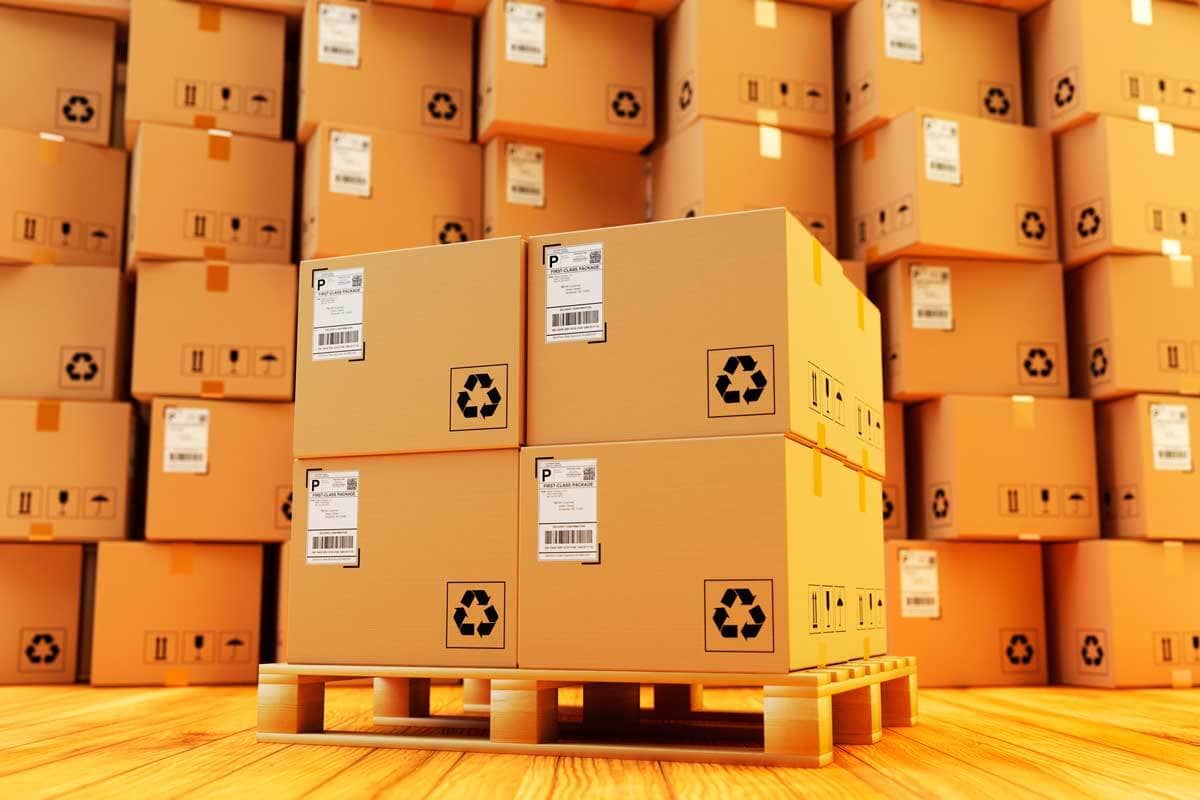
Boxes are packaging with a varied body and flat bottom that can be closed with a removable lid or a hinged lid. The shape of the boxes can vary, but the bottom and lid must remain flat. Three-layer corrugated cardboard is used to produce the boxes and is suitable for transporting and storing a variety of goods including appliances, clothing and alcohol. Five-layer corrugated cardboard is used to protect large and fragile goods, while seven-layer corrugated cardboard is designed for particularly valuable and delicate items. Choosing the right boxes and packaging is critical to ensure the safety and security of goods during transport and storage.

A crate is a closed transport container, the body of which is usually rectangular in cross-section parallel to the bottom. It consists of a bottom, two end walls and side walls and may or may not have a lid. Drawers are made of various materials such as wood, plywood, plastic, metal or a combination of these. Hinges, latches and handles should be recessed and nails and screws should not protrude beyond the surface. For heavy crates, wooden bars are provided at the bottom to facilitate unloading and loading with material handling equipment. Reinforcing bars are staggered on the bottom and lid to ensure tight interlocking when stacking and stability when loading. If necessary, the strength of the crates can be increased by gluing them with steel or plastic tape. Crates are designed for packing heavy and fragile goods, ensuring their protection and safety during transport. The right choice of crates and their design are key factors for the safe transport of goods.
BOTCHES
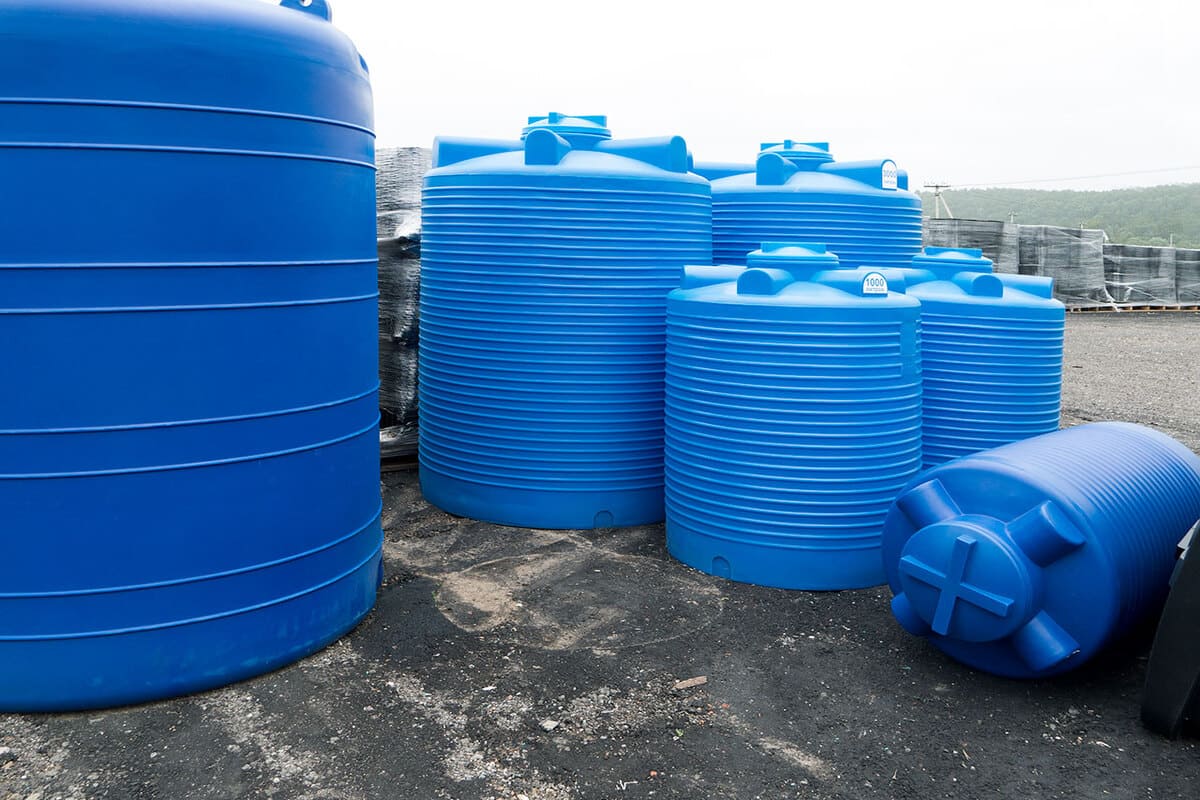
A barrel is a transport container of cylindrical or parabolic shape, equipped with hoops or zigs for easy rolling and a bottom. Barrels are made of various materials such as metal, plastic or wood. Screw closures should provide a secure closure and barrel lid clamping devices should provide a secure hold. It is recommended that drain plugs be sealed, e.g. with metal plates. When shipping drums containing liquids that may ferment during transport, it is essential to use special venting gates to prevent the liquid from escaping. These closures should be brightly and conspicuously labelled on the outside. Barrels are designed mainly for the transport of large volumes of liquid goods. The need to use drums is determined by the normative and technical documentation for specific goods. Proper selection and use of drums play an important role in ensuring the safety and security of goods during transport.
EURO CUBES

Eurocube (IBC container) is a specialized cube-shaped container mounted in a strong welded frame made of galvanized steel. The bottom of the Eurocube is made in the form of a pallet, which can be made of wood, plastic or steel, allowing it to be conveniently transported with a forklift.
The dimensions of the Eurocube in the cage are 1200x1160x1000 mm (+/- 10 mm) and the volume of this flask reaches 1000 liters. A measuring scale is usually provided on the Eurocube to allow easy identification of the remaining contents. This container is made of high-strength low-pressure polyethylene (LDPE), which guarantees durability and reliability.
In the upper part of the Eurocube there is a neck with a sealed lid with a screw connection with a diameter from 150 to 330 mm, which is designed for pouring the filling product. In the lower part there is a drainage device that does not go beyond the cube, which ensures convenient emptying.
The Eurocube design can withstand significant loads and provides a high degree of mechanical protection for the contents, while the plastic container ensures absolute tightness. Due to these characteristics, Eurocubes are widely used for storage and transportation of various liquids, including chemicals, water and petroleum products, which makes them indispensable in industry and agriculture.
CANISTRIES
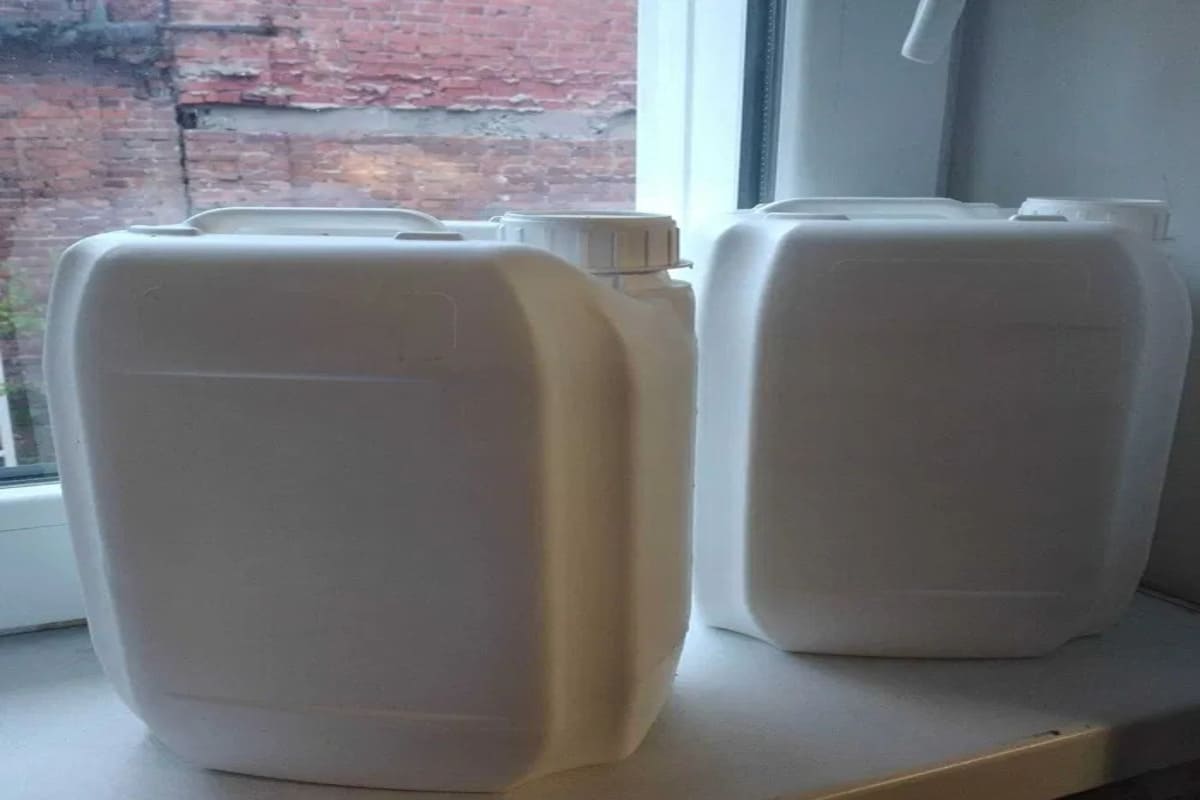
A canister is a container made of steel, aluminum or plastic with handles for easy carrying and a narrow neck that closes hermetically. It is designed for storing and transporting various liquids, including fuels, chemicals, water and oils.
The design of jerry cans can vary: there are horizontal, vertical, combination and folding models, making them versatile for different needs. Standard canister capacities range from 10 to 20 liters, but 5, 25, 30, 40 and 50 liter versions are also available, depending on the manufacturer.
Canisters are widely used in households, motor vehicles, industry and agriculture, providing safe storage and transport of liquids. When choosing a jerry can, it is important to consider its material, volume and intended use to ensure reliability and longevity of use. Use quality jerry cans to protect your liquids from leaks and contamination.
BOXES
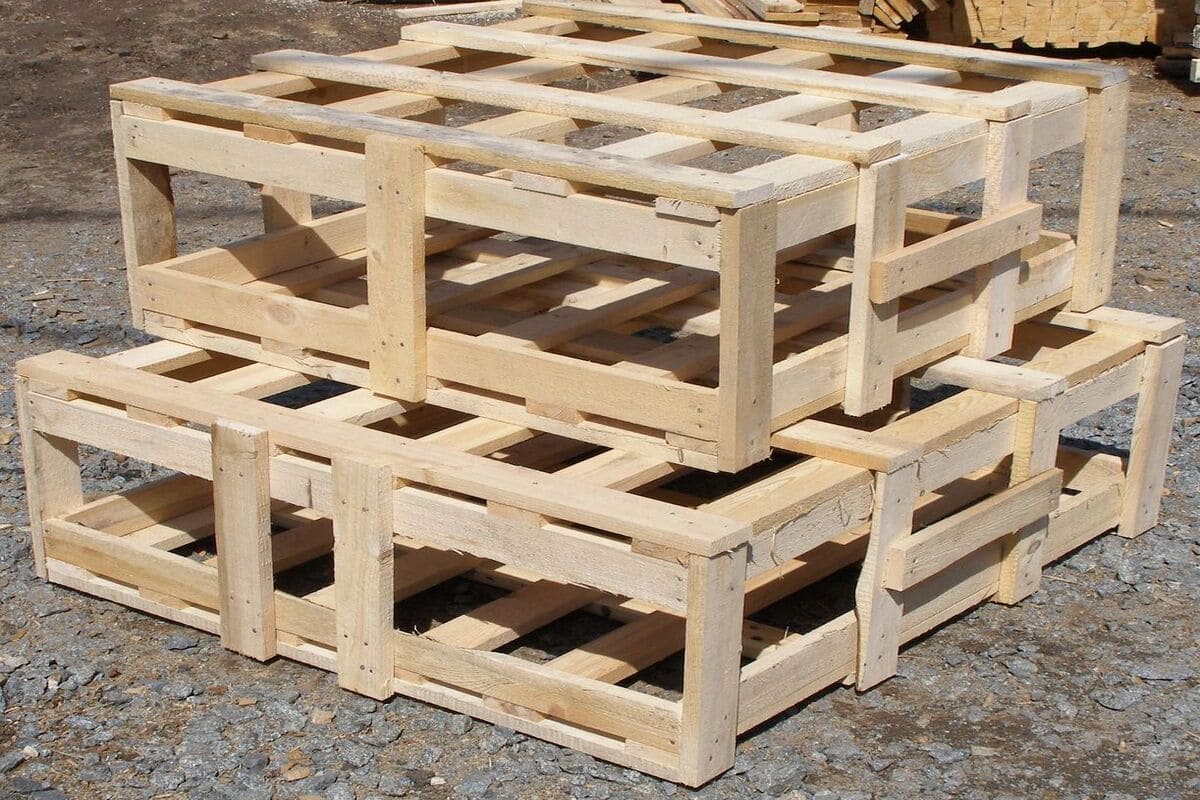
A box is a secure package if it is made of a durable material that ensures the safety of the goods being transported. Box closures should be designed to prevent access to the contents during transport. The strength of the box should be commensurate with the weight of the load, and handles and floors should be strong enough to withstand normal handling. For loads that cannot withstand pressure, it is advisable to use stronger lids and develop a design that allows the box to be placed on top of another without the risk of damaging the contents. The selection of quality boxes and their design features is critical to ensure the safety and integrity of shipments during transport.
BARABANS
.jpg)
A drum is an efficient cylindrical shaped transport container designed for storing and transporting various materials. It may have a smooth or corrugated body and is not equipped with hoops or zigs for rolling. The drum consists of a shell formed from several layers of paper stapled together.
The drum bottom and lids are made of laminated paper, laminated plywood, tin plate or a combination of these, which ensures the strength and reliability of the construction. The shell is connected to the bottom with a special metal band, and the lids are fixed with clamping and locking devices.
These containers are suitable for the transport of pasty or liquid gasses, provided the inner walls are treated or suitable synthetic materials are used. Drums are widely used in various industries, including logistics and manufacturing, making them indispensable for efficient transport.
BAGS
.jpg)
A sack is a soft transport container having a sleeve shape with a bottom and a neck, which can be open or closed. It is important that sacks close tightly to prevent accidental opening. Using sacks to pack goods that are sensitive to compression or goods that lose their value when exposed to air or dust due to damage is not an optimal solution.
Disposable soft containers, known as big bags, are large 1m³ bags with a load capacity of up to 1000 kg. Big bags are equipped with slings for easy lifting and are most often made of polypropylene or kapron fabric, making them ideal for transporting a variety of bulk and bulky goods. These containers are widely used in logistics, construction and agriculture, providing reliable packaging and safe delivery.
BALLONS
.jpg)
A gas cylinder is a specialized cylindrical container designed to store gasses under high pressure up to 15 MPa. Made of metal, it has a threaded hole in the upper part where a shut-off valve is installed. This vessel is used to store compressed, liquefied (converted to liquid at high pressure) and dissolved gasses, which makes it indispensable in various industries.
Gasses that can be stored in compressed form at normal temperature include oxygen, air, hydrogen, nitrogen, methane, fluorine and helium. Many other gasses, such as chlorine, ammonia, carbon dioxide, nitrous oxide and liquefied hydrocarbons, become liquid when pressurized and are stored in cylinders in this form without the need for refrigeration.
Metal gas cylinders are a simple and economical solution for storing various gasses. Their body is made from carbon or alloy steel for durability and reliability. Available volumes of gas cylinders range from 5 to 50 liters, allowing you to choose the best option for every need. These cylinders are widely used in industrial, medical and domestic applications, providing safe and efficient gas storage.
KEGS
.jpg)
A keg is a specialized container, usually made of stainless steel, aluminum or plastic, designed for storing and transporting beer, as well as other alcoholic and non-alcoholic beverages, both carbonated and plain, under pressure. Modern kegs are equipped with special valves that prevent air from getting inside during transport and storage.
To fill beer, an intake head is connected to the keg. There are heads for manual filling, which are equipped with a pump and a tap, but most often beverages are extracted from kegs by supplying a mixture of carbon dioxide and nitrogen from a cylinder. For this purpose, a special spigot is provided in the intake head, which allows the beverage to be fed through the cooler to the filling columns.
Kegs are indispensable in catering, gastronomy and events, providing convenient and efficient distribution of beverages. Their use helps to preserve the freshness and quality of beverages, which is especially important for beer. Choosing the right kegs and filling equipment plays a key role in the successful operation of bars and restaurants.
KEEPS
.jpg)
A bale is a compact compressed mass of material with a regular geometric shape, designed for the transport of various goods. Bales are goods that can be transported in bales or bales. To ensure the safety of valuable goods, they are lined with strong fabric and tied securely with steel tape or wire.
Bales are ideal for packing goods that are subject to mechanical effects such as compression, shocks and jolts. The packaging should be made of high quality and resistant materials that protect the contents from contamination and damage. Combinations of packaging materials can also be used to increase the strength and reliability of the packaging.
The structure is reinforced with wooden slats to add extra protection. It is important that bales are tied securely to prevent accidental opening and to ensure the integrity of the contents. Packaging made of paper, cloth, corrugated cardboard or plastic film does not provide sufficient protection and may cause damage during transport.
The use of bales for packing and transporting goods allows to guarantee their safety and protection from external influences, which makes this packaging method in demand in the logistics and freight transport sector. Proper bale packaging not only protects goods, but also simplifies the storage and transport process.
PALLETS
.jpg)
Pallets and pallets are important elements of transport containers of rectangular or square shape, which serve as a basis for creating a single goods place. These containers are used for convenient packaging and transport of goods, which facilitates the process of storing and moving goods.
There are many types of pallets, differing in material, construction, shape and size. Wooden pallets are a reliable and economical option for storing and transporting goods. Metal pallets are characterized by durability and resistance to mechanical damage. Plastic pallets are lightweight and hygienic, making them ideal for use in highly sanitary environments. Cardboard pallets are usually designed for transporting certain types of goods and are most often disposable.
According to standards, pallets are divided by size and labelling. The most common pallet types include:
· Euro pallets (EUR): size 1200x800x145 mm.
· Finnish pallets (FIN): size 1200x1000x145 mm.
· American pallets (US): size 1200x1200x145 mm.
· Conventional cargo pallets: dimensions 800x1200x145mm and 1200x1000x145mm unmarked, similar to European and Finnish pallets.
Choosing the right type of pallet is essential to ensure reliable packaging and the safety of goods during transport. The use of pallets and pallets can effectively optimize the logistics process and improve inventory management, making them indispensable in freight transport and warehousing activities.
LATHING
.jpg)
A cage is a protective structure designed to ensure the safe transport of valuable and fragile goods. The shape and size of the cage depends on the characteristics of the transported cargo and the materials used. To create a rigid package, the exact measurement of the cargo is taken, after which a crate is made that fully corresponds to its dimensions.
This type of packaging is used to transport bulky, heavy or fragile products, as the crate protects them from mechanical damage and prevents access by unauthorized persons. The crate is usually made on site from boards and sawn timber to ensure a perfect fit to the dimensions of the goods.
It should be borne in mind that the use of crates can increase the dimensions of a shipment by up to 30%, which is important when planning logistics processes. Effective crating not only protects the contents, but also contributes to safe and secure transport. The inclusion of crates in the packaging process significantly reduces the risk of damage and loss during transport, making them an important element in the freight and logistics industry.
STREECH FILM
.jpg)
Pallet film is a specialized packaging material designed to securely fix and fasten goods on pallets. It is actively used in warehouses, transport and logistics companies, as well as in shops. Pallet film is divided into two types: machine and manual.
Machine stretch film is designed to work with automated systems such as palletisers. Usually, the weight of a roll of such film exceeds 15 kilograms, which allows for efficient handling of large volumes of goods. Manual pallet film has a width of 45 to 50 cm and weighs no more than 2.5 kilograms, making it suitable for manual use when packing small quantities of goods.
The effective use of pallet film helps to prevent damage to goods during transport and storage and ensures the stability and security of goods. It is an indispensable tool in logistics and warehousing activities, enabling optimisation of packaging and delivery processes.
SHRINK FILM
.jpg)
Shrink wrap is one of the most popular materials for packaging palletised goods. It is available as web or pre-folded bags made to fit pallet sizes. The strong industrial film, with thicknesses ranging from 190 to 250 micrometers, is made from polyethylene with the addition of plastic polymers, which gives it excellent protective properties.
These properties are due to the presence of UV stabilizers and flame retardants, which make the film resistant to sunlight and ensure a long service life. In recent years, shrink films have been increasingly used as transport packaging in industries such as meat and dairy, fish, medical, food and construction.
The main technology of shrink film production is extrusion or co-extrusion, which allows to create a film with the required characteristics. Due to its unique properties, shrink film provides reliable protection of products, prevents damage and contamination, and helps to extend the shelf life of goods.
CONTAINERS
.jpg)
Containers and tank containers are important elements of transport packaging and equipment. A container is a reusable vehicle designed for the transport and temporary storage of goods with a volume ranging from 2.6 to 67 m³. Containers are equipped with mechanisms that ensure their mechanized installation and removal from vehicles.
A container is a metal container that can be fully or partially closed and is designed to hold goods. Due to their unaltered characteristics, containers are highly durable and suitable for repeated use. The design of the container allows cargo to be transported using different modes of transport without the need to repackage it. This greatly simplifies cargo operations, such as transhipment between different vehicles, and facilitates efficient storage of goods.
Containers are categorized by purpose into:
1. Universal Containers: Used for the carriage of a wide range of unit loads, both packaged and unpackaged. According to ISO (International Organisation for Standardisation) standards, universal containers are divided into intercontinental (large tonnage) and intracontinental (2.5 tonnes gross weight). Universal containers also include low-tonnage containers with gross weights of 0.625 and 1.25 tonnes.
2. Specialized containers: Designed for the repeated carriage and storage of certain types of cargo, including liquid, hazardous, perishable and bulk cargo. Specialized containers have standardized dimensions and maximum gross weights, as well as markings and inscriptions to inform about the contents.
Classification of packagings
According to the field of application, containers are divided into:
1. Transport packaging - designed for packaging, storage and transport of products, forms an independent transport unit.
2. Consumer packagings - used for packaging and delivery of products to the end consumer.
3. Production packaging - designed for storage, handling and warehousing of goods at production sites.
By the number of items to be packed:
- Individual packagings - designed for a single unit of product.
- Group packagings - designed for several units of products.
By nature of use:
- Single container - used one time.
- Returnable packaging - used packaging intended for reuse.
- Reusable containers - have strength characteristics designed for repeated use.
- Inventory packagings are reusable packagings that belong to a specific company and must be returned.
By design:
- Collapsible, non collapsible, folding, closed, open, stackable, combined.
By material of manufacture:
- Made of wood, paper, metal, glass, textiles, polymers, multi-layer combined materials, etc. For example, wooden containers are rigid and strong, providing good protection for goods, but increase transport costs due to their heaviness.
By physical characteristics:
- Hard, soft, brittle, isothermal, airtight.
Form:
- Crate, barrel, drum, canister, flask, cylinder, sack, can, bottle, box, carton, bag, tray, tube, ampoule, cup, vial, bale, roll.
Dimensions:
- Small-sized packaging - dimensions do not exceed 1200×1000×1200 mm.
- Large-size packagings - dimensions exceed 1200×1000×1200 mm.
Requirements for tare and packaging
Types of tare and packaging, as well as packaging means used for packaging of specific cargoes are determined by standards, technical conditions and other normative and technical documentation.
Key factors influencing the choice of packaging and containers include:
- Type of cargo, its weight, size and shape.
- The design, composition and nature of products that determine the specifics of cargo handling during transport and handling operations.
- Safety of packagings for vehicles and workers involved in the transport process. Packaging and containers must not have sharp parts (nails, wire ends, etc.) that could damage the vehicle or injure employees.
The following requirements must be taken into account when using packagings:
- Do not load packagings with more than the nominal gross weight.
- The loading method must prevent the occurrence of residual deformations.
- The load in the load box must be below the level of the sides.
- The tipping walls must be in the closed position.
A general packing list or a packing list for each consignment of packed goods shall be drawn up for each consignment. The general packing list is inserted in consignment box No. 1 of each consignment to be sent. Other accompanying documentation must also be packed, usually in a waterproof envelope or bag. Properly selected packaging and tare guarantee the safety of the cargo during transport.





